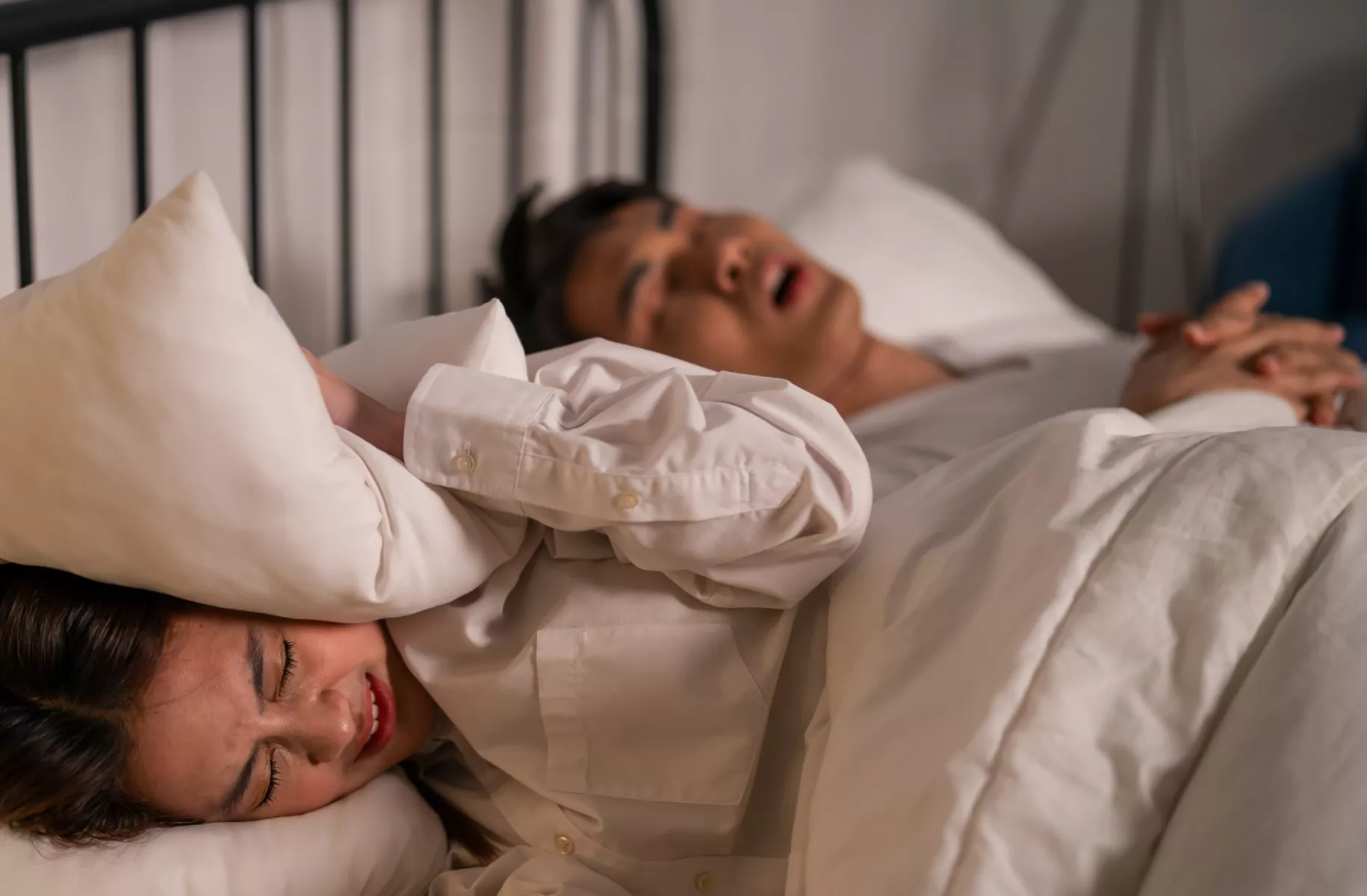Sleep apnea causes breathing to repeatedly stop and start during sleep, with pauses lasting from seconds to minutes. These disruptions occur when throat muscles relax excessively, blocking the airway partially or completely. The brain detects oxygen drops and briefly awakens you to restore breathing, events you rarely remember but which fragment your sleep architecture throughout the night. If these symptoms sound familiar, visiting a sleep apnea clinic Singapore patients trust can help diagnose the condition and recommend effective treatments to restore quality sleep.
A sleep apnea clinic provides diagnostic equipment and treatment protocols that general practitioners cannot offer. ENT specialists examine the anatomical structures of your upper airway using flexible nasendoscopy, identifying physical obstructions like enlarged tonsils, deviated septums, or elongated soft palates. The clinic coordinates overnight sleep studies, analyzes breathing patterns, and develops treatment strategies ranging from oral appliances to surgical interventions based on your specific airway anatomy and severity measurements.
Sleep Study Process at Specialist Clinics
Polysomnography Setup and Monitoring
Polysomnography records multiple body functions simultaneously during sleep. Technicians attach:
- Electrodes to your scalp to monitor brain waves
- Sensors near your eyes to track eye movements
- Additional electrodes on your chin to measure muscle activity
- Elastic belts around your chest and abdomen to detect breathing movements
- A pulse oximeter on your finger to continuously measure blood oxygen saturation
The equipment records every apnea event (complete breathing cessation for 10+ seconds) and hypopnea event (partial airflow reduction of 30% or more). Your Apnea-Hypopnea Index (AHI) calculates the average number of events per hour: mild sleep apnea shows fewer events, moderate shows more frequent events, and severe shows the most frequent events. The study also captures sleep position changes, limb movements, and heart rhythm variations that influence treatment decisions.
Home Sleep Testing Options
Level 3 portable monitors allow testing in your own bedroom for selected patients. These devices measure:
- Airflow through nasal cannulas
- Breathing effort via chest straps
- Oxygen saturation
- Body position
The compact unit attaches to your chest, recording data on a memory card for analysis the next day.
Home testing suits patients with high probability of moderate to severe obstructive sleep apnea without other sleep disorders. The test cannot diagnose central sleep apnea, periodic limb movements, or REM-related breathing disorders. A healthcare professional determines eligibility based on physical examination findings and symptom patterns.
Treatment Pathways After Diagnosis
CPAP Therapy Implementation
Continuous Positive Airway Pressure delivers pressurized air through a mask, creating an air splint that keeps your airway open. Current CPAP machines automatically adjust pressure levels throughout the night based on detected flow limitations. The starting pressure typically ranges from 4-20 cm H2O, with the device’s algorithm responding to snoring, flow limitations, and apnea events.
Mask selection significantly impacts treatment success. Nasal masks suit mouth-closed sleepers, while full-face masks accommodate mouth breathing. Nasal pillows offer minimal contact for active sleepers. A sleep technician conducts mask fitting trials, measuring leak rates and comfort across different positions. Heated humidification prevents nasal dryness, with temperature settings between 16-30°C and humidity levels adjustable in 0.5 increments.
Oral Appliance Therapy
Mandibular advancement devices reposition the lower jaw forward by 5-10mm, enlarging the space behind the tongue. Custom-fabricated appliances use dental impressions to create upper and lower trays connected by adjustable mechanisms. The dentist advances the device gradually over several weeks, typically 0.25mm per adjustment, monitoring effectiveness against comfort.
These appliances work particularly well for mild to moderate sleep apnea, or in severe cases when patients cannot tolerate CPAP. Temporomandibular joint evaluation precedes fitting, as the forward jaw position can aggravate existing TMJ disorders. Regular dental monitoring checks for tooth movement or bite changes every six months during treatment.
Surgical Interventions
Uvulopalatopharyngoplasty (UPPP) removes excess tissue from the soft palate and pharynx, widening the airway at the throat’s narrowest point. The surgeon excises the uvula, portions of the soft palate, and pharyngeal tissue while preserving enough structure to prevent food regurgitation. Recovery requires 2-3 weeks, with significant throat pain requiring analgesics as determined by a healthcare professional.
Maxillomandibular advancement moves both upper and lower jaws forward by 10-12mm, expanding the entire airway. This procedure requires orthodontic preparation and 6-8 weeks recovery. Genioglossus advancement pulls the tongue muscle attachment forward, often combined with hyoid suspension to stabilize the airway further.
ENT Specialist Examination Components
Flexible Nasendoscopy Assessment
The ENT specialist inserts a 3.5mm flexible endoscope through your nostril after applying topical anaesthetic spray. The camera navigates through the nasal cavity, examining the septum for deviation, inferior turbinates for hypertrophy, and the nasopharynx for adenoid tissue. As the scope descends, it visualizes the soft palate length, uvula size, and lateral pharyngeal wall thickness.
Drug-induced sleep endoscopy (DISE) takes this assessment further by examining your airway under sedation. Propofol infusion creates conditions mimicking natural sleep while the endoscope records collapse patterns at multiple levels. The VOTE classification system documents obstruction sites: Velum (soft palate), Oropharyngeal lateral walls, Tongue base, and Epiglottis. Each site receives grading for degree (partial/complete) and configuration (anteroposterior/lateral/concentric).
Physical Airway Measurements
The Friedman tongue position scale grades oral cavity crowding from I-IV based on visible structures when you open your mouth. Grade III-IV positions, where the soft palate remains hidden behind the tongue, may be associated with higher surgical failure rates for simple palate procedures. Tonsil size grading from 0-4 helps determine whether tonsillectomy might improve outcomes.
The specialist measures retropalatal and retroglossal spaces using lateral cephalometric X-rays. The posterior airway space should exceed 11mm behind the soft palate and 10mm behind the tongue base. Hyoid bone position relative to the mandibular plane indicates tongue base positioning, with lower hyoid placement correlating with increased obstruction risk.
Managing CPAP Challenges
Mask Leak Troubleshooting
Large leaks reduce therapeutic pressure and trigger compensatory pressure increases that worsen leaking further. Proper strap adjustment follows a specific sequence:
- Lower straps first for stability
- Upper straps for seal
The mask should lift slightly off your face when you smile but maintain seal during normal breathing. Silicone-based mask liners or gecko nasal pads reduce leaks around challenging facial contours.
Mouth leaks during nasal mask use indicate mouth breathing requiring either chin straps or full-face mask conversion. The leak report on your CPAP machine displays the 95th percentile leak rate, values above 24 L/min suggest significant leaking requiring intervention. Regular mask cushion replacement every 3-6 months maintains optimal seal as silicone degrades.
Pressure Intolerance Solutions
Exhalation pressure relief (EPR/C-Flex) reduces pressure during exhalation by 1-3 cm H2O, easing the breathing-against-pressure sensation. Ramp features start at lower pressures (typically 4 cm H2O) and gradually increase over 5-45 minutes as you fall asleep. Auto-adjusting CPAP allows wider pressure ranges, delivering only the pressure needed moment-to-moment rather than fixed high pressures.
Bilevel positive airway pressure (BiPAP) provides different inspiratory and expiratory pressures, with typical settings like 14/10 cm H2O. This benefits patients requiring high pressures (>15 cm H2O) or those with concurrent respiratory conditions. The pressure support (IPAP-EPAP difference) augments your natural breathing effort, particularly helpful for central sleep apnea components.
Did You Know?
Your soft palate position changes dramatically between upright and supine positions, what appears adequate during examination may obstruct completely when lying down, explaining why sleep endoscopy during sedation provides important information that awake examination cannot reveal.
What Our ENT Specialist Says about Sleep apnea
Sleep apnea affects multiple organ systems beyond just sleep quality. The repetitive oxygen desaturations trigger inflammatory cascades that damage blood vessel walls over time. During consultation, examination includes not just airway anatomy but also assessment of cardiovascular risk factors that sleep apnea accelerates.
Some patients assume snoring equals sleep apnea, but silent apnea occurs, partners report breath-holding episodes without snoring. The absence of snoring often delays diagnosis since patients feel less urgency to seek evaluation. Conversely, severe snoring can occur without significant apnea, though the vibration trauma to pharyngeal tissues may progress to obstruction over time.
Treatment selection depends on multiple factors beyond just AHI numbers. A patient with AHI of 18 but severe daytime sleepiness may need different treatment considerations than someone with AHI of 25 who functions well. Body position significantly influences some patients, lateral sleep can reduce AHI in positional sleep apnea, making positional therapy an option for selected cases.
Putting This Into Practice
- Schedule consultation when experiencing loud snoring combined with witnessed breathing pauses, especially if accompanied by morning headaches or unrefreshing sleep despite adequate sleep duration.
- Document your sleep patterns for two weeks before consultation, noting bedtime, wake time, number of awakenings recalled, and daytime alertness ratings. Include your bed partner’s observations about snoring patterns, gasping sounds, or unusual movements.
- Request previous medical records showing blood pressure trends, as resistant hypertension despite multiple medications can indicate underlying sleep apnea. Bring any prior sleep study results, even if performed years ago, as comparison reveals disease progression patterns.
- Complete the Epworth Sleepiness Scale, rating your likelihood of dozing in eight situations. Higher scores suggest excessive daytime sleepiness requiring evaluation, though some patients with severe apnea score normally due to adaptation.
- Prepare a list of all medications, as certain drugs like benzodiazepines, opioids, and muscle relaxants worsen sleep apnea by increasing upper airway muscle relaxation during sleep.
When to Seek Professional Help in sleep apnea
- Loud snoring that disturbs your partner’s sleep
- Witnessed episodes of stopped breathing during sleep
- Gasping or choking sensations that awaken you
- Morning headaches occurring several days per week
- Excessive daytime fatigue despite sleeping 7-9 hours
- Difficulty concentrating or memory problems
- Falling asleep during routine activities like reading or watching television
- Blood pressure remaining elevated despite medication compliance
- Night sweats unrelated to room temperature
- Frequent nighttime urination (more than twice nightly)
- Decreased libido or erectile dysfunction
Commonly Asked Questions about Sleep apnea
How long does a sleep study take to show results?
The overnight recording generates extensive data requiring manual scoring by trained technicians. Preliminary results arrive within 3-5 business days, with the full report including treatment recommendations available within 7-10 days. Complex cases with multiple sleep disorders may require additional analysis time.
Can sleep apnea resolve without treatment?
Mild positional sleep apnea may improve with weight loss. However, anatomical factors like narrow airways or enlarged tonsils require specific interventions. Untreated moderate to severe sleep apnea progressively worsens as tissue elasticity decreases with age.
What happens if CPAP doesn’t work?
Treatment failure usually stems from suboptimal settings or interface issues rather than true CPAP failure. Your sleep specialist adjusts pressure settings based on efficacy data downloads, tries alternative masks, or adds comfort features. Combination therapy using CPAP with oral appliances or positional therapy can improve outcomes when single treatments prove insufficient.
How do I know if surgery will help in Sleep apnea?
Drug-induced sleep endoscopy identifies specific obstruction sites, predicting surgical success more accurately than awake examination. Multi-level obstruction may require staged procedures or combination approaches. Patients with lower BMI and identifiable anatomical abnormalities may achieve different surgical outcomes than those with obesity-related airway collapse.
Next Steps
Sleep clinic evaluation identifies your specific obstruction patterns and guides treatment selection. Sleep studies provide the objective data needed for insurance approval and treatment monitoring. Your ENT specialist coordinates multi-level assessment to determine whether CPAP, oral appliances, or surgical interventions will provide optimal outcomes.
If you’re experiencing loud snoring, witnessed breathing pauses, or excessive daytime fatigue despite adequate sleep duration, an MOH-accredited ENT specialist can provide comprehensive sleep evaluation and treatment planning.

